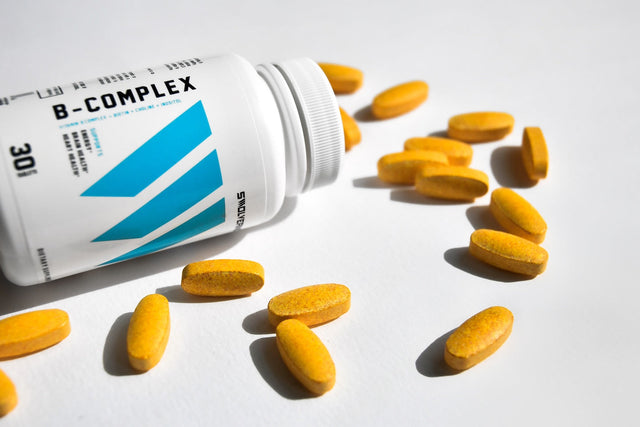Unlocking the power of IGF-1 LR3 can transform your journey to enhanced growth and recovery. In the realm of fitness and wellness, this peptide has gained recognition for its remarkable ability to accelerate muscle gains, aid in fat loss, and promote speedy recovery post-workout sessions. As we delve into the ultimate guide, we will uncover the science behind IGF-1 LR3 and how it influences our body's processes. From boosting protein synthesis to enhancing cellular regeneration, the benefits are profound and promising.
Whether you are an athlete, bodybuilder, or fitness enthusiast, understanding how to leverage IGF-1 LR3 correctly can be a game-changer in achieving your fitness goals. Stay tuned as we explore the mechanisms, dosages, and potential side effects associated with this powerful peptide, empowering you to make informed decisions for a healthier and stronger you.
Understanding IGF-1 LR3
What Is IGF-1 LR3?
Insulin-like Growth Factor 1 Long R3 (IGF-1 LR3) is a synthetic peptide hormone designed to mimic and enhance the effects of naturally occurring IGF-1, a critical growth factor involved in muscle development, recovery, and cellular repair. Structurally modified to contain 83 amino acids, IGF-1 LR3 has a significantly longer half-life—approximately 20 to 30 hours—compared to natural IGF-1, which typically lasts only 12–15 minutes in circulation (Clemmons, Trends in Endocrinology & Metabolism).
This extended half-life increases its stability, potency, and overall effectiveness, making it a popular compound among athletes and bodybuilders seeking enhanced anabolic performance.
How IGF-1 LR3 Works
IGF-1 LR3 functions by binding to the IGF-1 receptor, activating intracellular signaling pathways that promote protein synthesis, muscle fiber hypertrophy, and nutrient uptake. Although natural IGF-1 is primarily synthesized in the liver in response to growth hormone (GH) stimulation, IGF-1 LR3 can be administered exogenously to bypass this indirect process and produce faster results.
Additionally, its design limits its affinity for IGF-binding proteins (IGFBPs), which normally restrict IGF-1’s activity. This modification allows IGF-1 LR3 to remain free-floating in the bloodstream and exert more direct anabolic effects (Jones & Clemmons, Endocrine Reviews).
Performance and Recovery Benefits
IGF-1 LR3’s anabolic effects make it a powerful tool for:
-
Muscle growth – by activating satellite cells and stimulating muscle fiber development
-
Enhanced recovery – promoting faster repair of damaged tissues post-training
-
Improved fat metabolism – supporting fat oxidation and nutrient partitioning
-
Increased protein synthesis – driving lean mass gains over time
Mouse model studies have also linked IGF-1 signaling to improvements in bone density and skeletal strength, suggesting systemic health benefits beyond just muscular development (Yakar & Rosen, Journal of Bone and Mineral Research).
Benefits of IGF-1 LR3 for Muscle Growth and Recovery
Muscle Growth and Hypertrophy
One of the most notable benefits of IGF-1 LR3 is its role in promoting muscle hypertrophy. It stimulates the proliferation and differentiation of satellite cells, which are essential for muscle repair and development (Florini et al., American Journal of Physiology). This cellular activity helps build lean muscle mass, making IGF-1 LR3 especially appealing to athletes and bodybuilders aiming to increase strength and enhance physique.
Enhanced Post-Workout Recovery
In addition to muscle growth, IGF-1 LR3 significantly accelerates post-workout recovery. Intense training causes microscopic muscle damage and fatigue, which can compromise future performance. By enhancing muscle protein synthesis, IGF-1 LR3 facilitates faster tissue repair and reduces inflammation, shortening recovery time (Adams, Journal of Applied Physiology). This allows for more frequent, high-quality training sessions and reduces the risk of overtraining.
Fat Loss and Body Composition
Another benefit of IGF-1 LR3 is its ability to support fat loss while preserving muscle mass. It promotes lipolysis, the breakdown of triglycerides into free fatty acids used for energy, aiding in reductions in body fat percentage (Yaspelkis & Ivy, American Journal of Physiology). This dual impact on fat metabolism and lean mass retention improves overall body composition, making it a compelling option for individuals aiming to achieve a leaner, more muscular look.
How Does IGF-1 LR3 Work in the Body?
IGF-1 Receptor Activation
IGF-1 LR3 works by binding to IGF-1 receptors located on the surface of muscle and other tissue cells. Once activated, these receptors initiate intracellular signaling cascades, such as the PI3K-Akt pathway, which are critical for muscle protein synthesis, cellular growth, and survival (Jones & Clemmons, Endocrine Reviews). This anabolic signaling is a key driver behind the strength and size gains attributed to IGF-1 LR3.
Enhanced Nutrient Uptake
IGF-1 LR3 also enhances the uptake of glucose and amino acids into muscle cells, improving nutrient availability during the recovery process (DeFronzo et al., Diabetes Care). This ensures the muscles are well-fueled for repair and regeneration, supporting better performance in future workouts.
Cell Survival and Regeneration
Beyond growth and repair, IGF-1 LR3 exhibits anti-apoptotic properties, helping prevent programmed cell death under stress conditions such as intense training or injury (Duan, Journal of Endocrinology). This not only preserves existing muscle cells but also aids in long-term muscle health and recovery, enabling sustained training progress over time.
Dosage and Administration of IGF-1 LR3
Typical Dosage Guidelines
When it comes to dosing IGF-1 LR3, precision and individualization are essential. Most protocols recommend a dosage between 20 to 100 micrograms per day, depending on factors such as body weight, fitness goals, and previous peptide use. For beginners, it's advisable to start at the lower end (20–40 mcg/day) to assess tolerance and minimize side effects (Siddle, Growth Hormone & IGF Research).
Some bodybuilders and performance athletes may gradually increase to higher dosages during short cycles, but long-term use without medical oversight is discouraged due to potential systemic effects.
Injection Method and Technique
IGF-1 LR3 is typically administered via subcutaneous injection, although some protocols include intramuscular (IM) application depending on the user's goals. Subcutaneous injections offer more consistent absorption and are generally preferred for ease and comfort (Bidlingmaier et al., Clinical Endocrinology).
To reduce irritation and tissue damage:
-
Rotate injection sites
-
Use insulin syringes for accuracy
-
Maintain sterile technique to prevent infections
Optimal Timing for Use
Many users choose to inject IGF-1 LR3 post-workout or before bedtime to align with natural growth hormone (GH) surges, potentially increasing its anabolic impact (Velloso, Growth Hormone & IGF Research). Post-workout timing may enhance nutrient partitioning and recovery, while bedtime dosing may promote overnight repair and regeneration.
Potential Side Effects of IGF-1 LR3
Blood Sugar and Hypoglycemia
One of the primary concerns with IGF-1 LR3 use is its insulin-mimicking effect, which can lower blood glucose levels and lead to hypoglycemia. Symptoms include:
-
Dizziness
-
Weakness
-
Confusion
-
Irritability
To reduce the risk, users should monitor blood sugar, especially during the first few weeks of use, and consume adequate carbohydrates with each dose (DeFronzo et al., Diabetes Care).
Joint Pain and Discomfort
Some users report joint pain or stiffness, particularly when using higher doses. This may result from accelerated muscle growth placing stress on joint structures (Velloso, Growth Hormone & IGF Research). Incorporating collagen or joint-support supplements may help alleviate this issue.
Water Retention and Bloating
IGF-1 LR3 can lead to mild water retention, causing a bloated appearance and in some cases, elevated blood pressure. These effects are generally short-term and subside as the body adapts. However, persistent symptoms should prompt a dosage reassessment or consultation with a healthcare provider (Clemmons, Trends in Endocrinology & Metabolism).
1GF-1LR3 Vs. Other Peptides
Comparison to Standard IGF-1
When comparing IGF-1 LR3 to other growth factors, it is essential to understand the unique properties that set it apart. For instance, traditional IGF-1 has a shorter half-life, which may limit its effectiveness in promoting sustained muscle growth and recovery. In contrast, IGF-1 LR3's extended half-life allows for a more prolonged anabolic effect, making it a preferred choice for those seeking significant results in muscle development.
IGF-1 LR3 vs. Human Growth Hormone (HGH)
Another growth factor often compared to IGF-1 LR3 is Human Growth Hormone (HGH). While HGH primarily stimulates IGF-1 production in the liver, IGF-1 LR3 acts directly on muscle and other tissues to promote growth. This direct action can make IGF-1 LR3 a more efficient option for individuals looking to enhance their muscle gains without the need for exogenous HGH administration.
IGF-1 LR3 vs. Mechano Growth Factor (MGF)
Additionally, other peptides like Mechano Growth Factor (MGF) also play a role in muscle repair and growth. However, IGF-1 LR3 has a more comprehensive range of benefits, including fat loss and improved recovery, making it a versatile option for athletes and fitness enthusiasts. Understanding these distinctions allows individuals to make informed decisions about which growth factor may best suit their specific goals and needs.

Where to Buy IGF-1 LR3
Online Sources and Peptide Vendors
Acquiring IGF-1 LR3 requires careful consideration, as the quality and source of the peptide can significantly impact its effectiveness and safety. Many individuals turn to online suppliers specializing in research chemicals and peptides. However, it is crucial to conduct thorough research to ensure that the vendor is reputable and provides high-quality products. Look for companies that offer third-party testing results to verify the purity and potency of their peptides.
Clinics and Wellness Providers
Additionally, some fitness and wellness clinics may offer IGF-1 LR3 as part of their services, particularly those focusing on hormone optimization and performance enhancement. Consulting with a healthcare professional can help individuals find legitimate sources and ensure that they are using IGF-1 LR3 safely and effectively.
Legal Considerations
It is also essential to be aware of the legal status of IGF-1 LR3 in your region, as regulations may vary. In some countries, purchasing or using IGF-1 LR3 without a prescription may be illegal. Therefore, understanding local laws and regulations is vital to avoid potential legal issues while seeking this powerful peptide.
Safety precautions and considerations
Prior to incorporating IGF-1 LR3 into your fitness regimen, it is essential to take several safety precautions into account. First and foremost, individuals should consult with a healthcare professional, particularly if they have pre-existing medical conditions or are taking other medications. A medical professional can provide guidance on the appropriateness of IGF-1 LR3 use and monitor for any potential interactions or adverse effects.
It is also important to follow proper dosing guidelines and administration techniques to minimize risks. Users should never exceed recommended dosages, as doing so can lead to an increased likelihood of side effects and complications. Additionally, maintaining sterile conditions during peptide preparation and injection is crucial to prevent infections.
Monitoring your body's response to IGF-1 LR3 is paramount. Keeping track of any changes in mood, physical performance, or adverse reactions can help identify potential issues early on. If any concerning symptoms arise, it is vital to discontinue use and consult a healthcare provider. By prioritizing safety and awareness, individuals can maximize the benefits of IGF-1 LR3 while minimizing potential risks associated with its use.
Conclusion: Maximizing The Potenial Of IGF-1 LR3
In conclusion, IGF-1 LR3 presents a powerful opportunity for those looking to enhance their growth and recovery in the pursuit of fitness and wellness. By understanding its mechanisms, benefits, and potential side effects, individuals can make informed decisions about incorporating this peptide into their routines. With its unique ability to promote muscle hypertrophy, accelerate recovery, and aid in fat loss, IGF-1 LR3 stands out as a valuable tool for athletes and fitness enthusiasts alike.
To maximize the potential of IGF-1 LR3, it is crucial to approach its use with careful planning and consideration. Proper dosing, administration techniques, and monitoring can enhance the effectiveness while minimizing risks. Furthermore, seeking guidance from healthcare professionals and engaging with the fitness community can provide invaluable insights and support throughout the journey.
Ultimately, the key to unlocking the power of IGF-1 LR3 lies in a holistic approach to fitness, incorporating balanced nutrition, consistent training, and adequate recovery. By combining these elements with the benefits of IGF-1 LR3, individuals can achieve their fitness goals more efficiently and effectively, paving the way for a healthier and stronger future.







